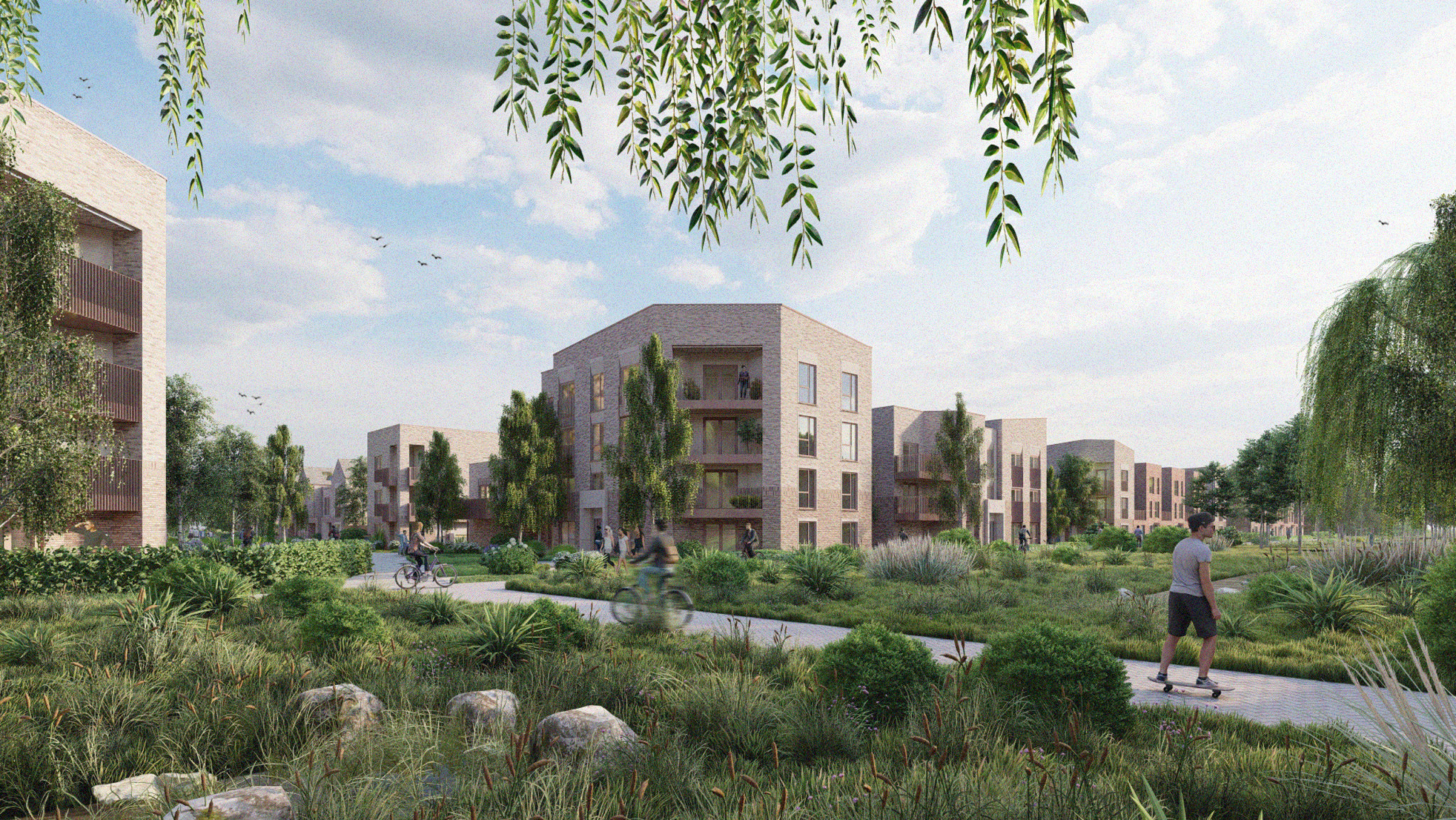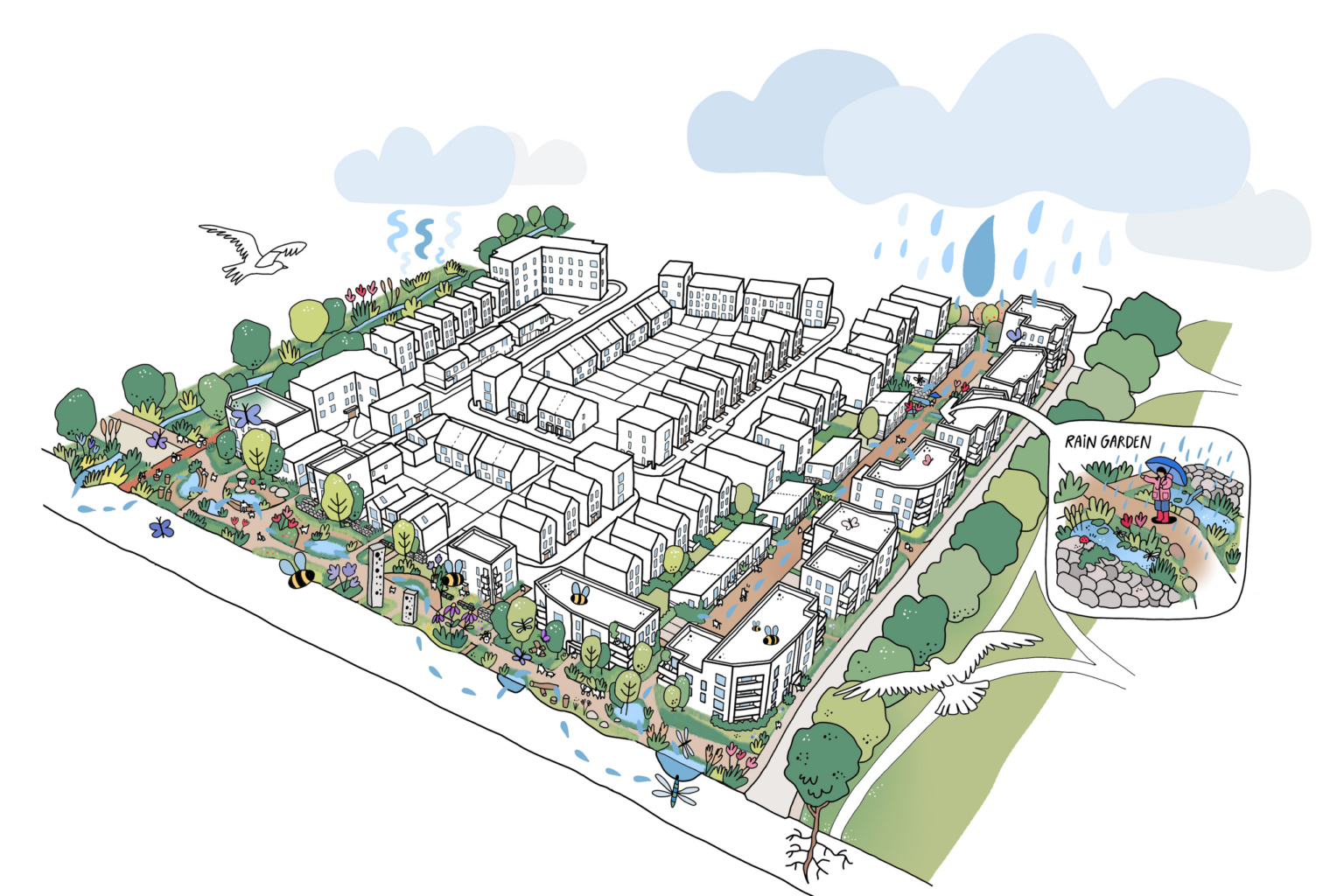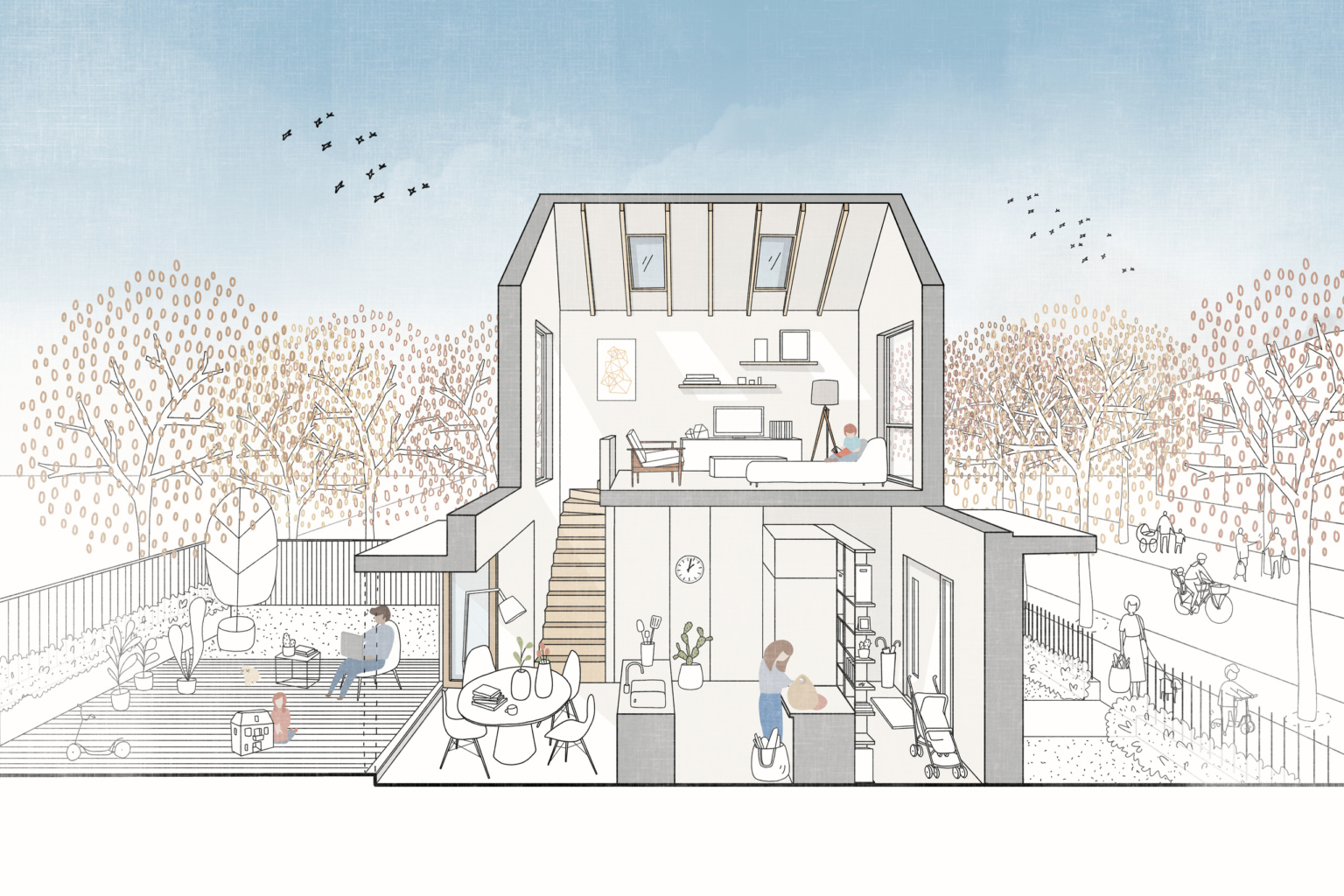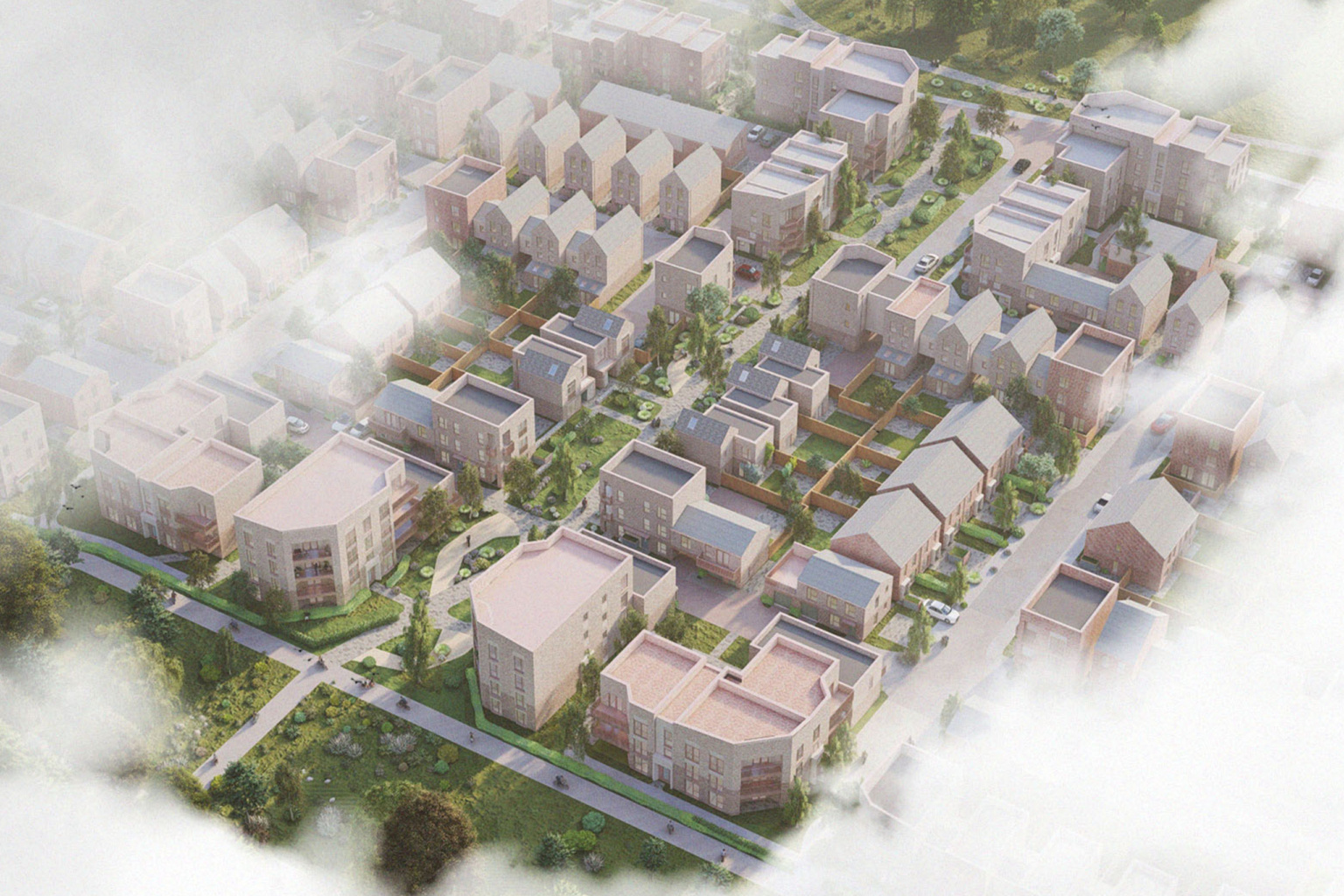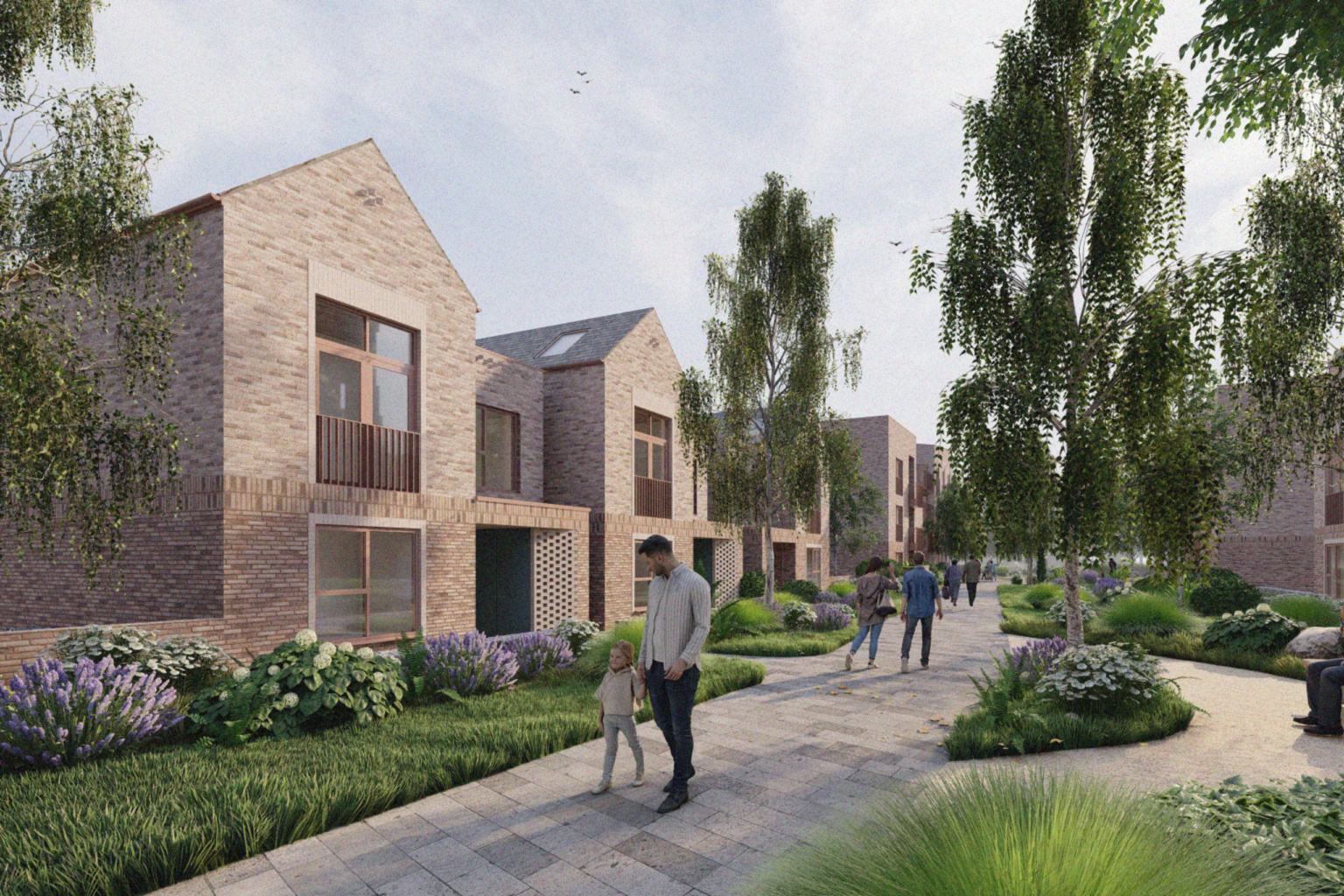HTA achieved planning for Darwin Green Phase 4, one of a six-phase suburban housing masterplan to the northwest of Cambridge City Centre. The scheme was developed throughout 2021-2022 through extensive workshops with the Cambridge City Council Urban Design and Planning teams to respond to feedback from a number of design review panels, accessibility panels and statutory consultees. The quality of the design is testimony to the collaboration of this design development process with Cambridge.
The Darwin Green neighbourhood of 363 homes is part of a wider cycle network with excellent connections as part of Cambridge’s established active travel culture. The proposals enhance the connections and green corridors established in the wider masterplan. The landscape is at the heart of the proposals, with a vehicle-free green link through the middle of the neighbourhood supported by rain gardens, street planting and pockets of open space to prioritise travel by foot and bike.

